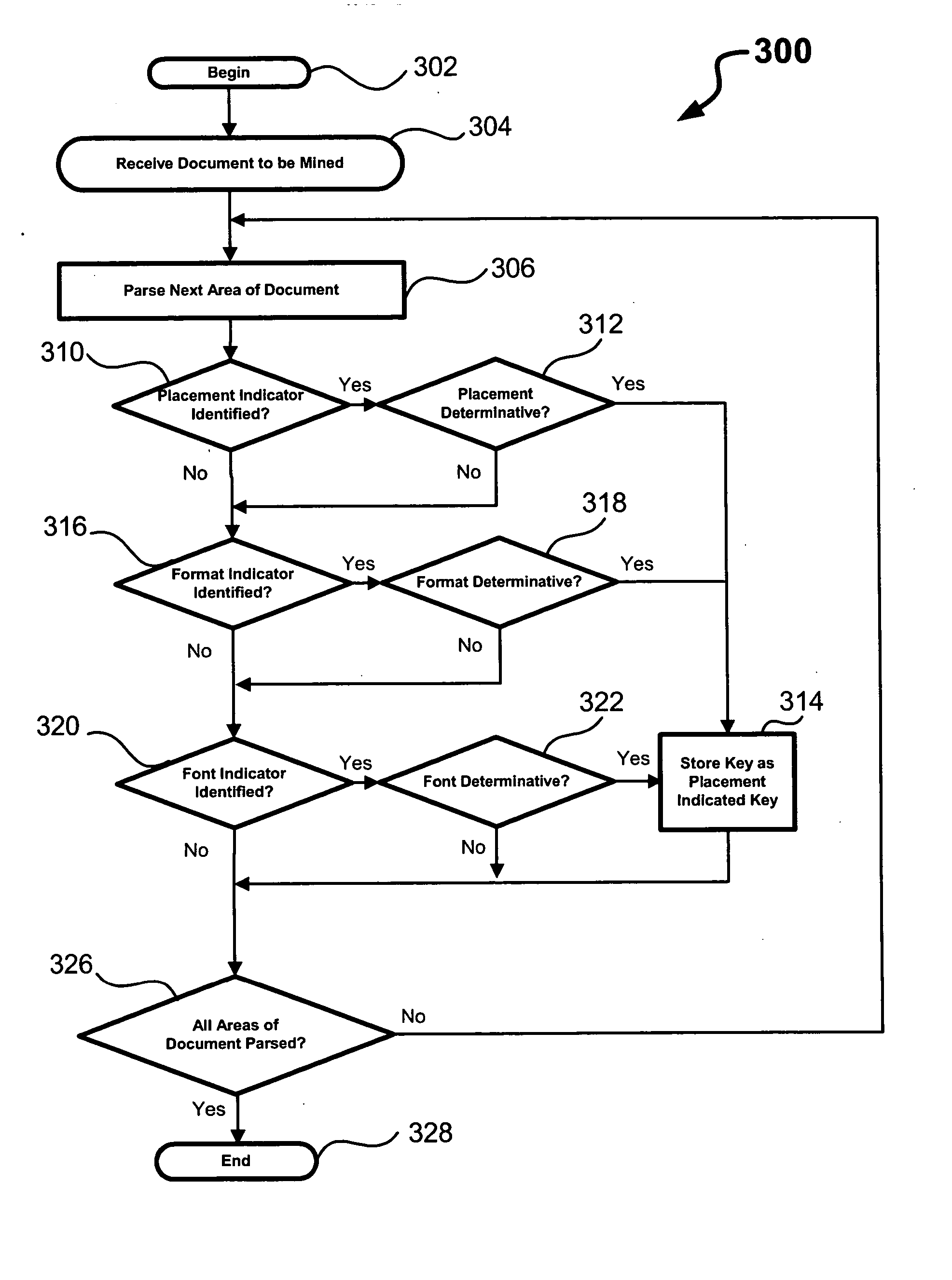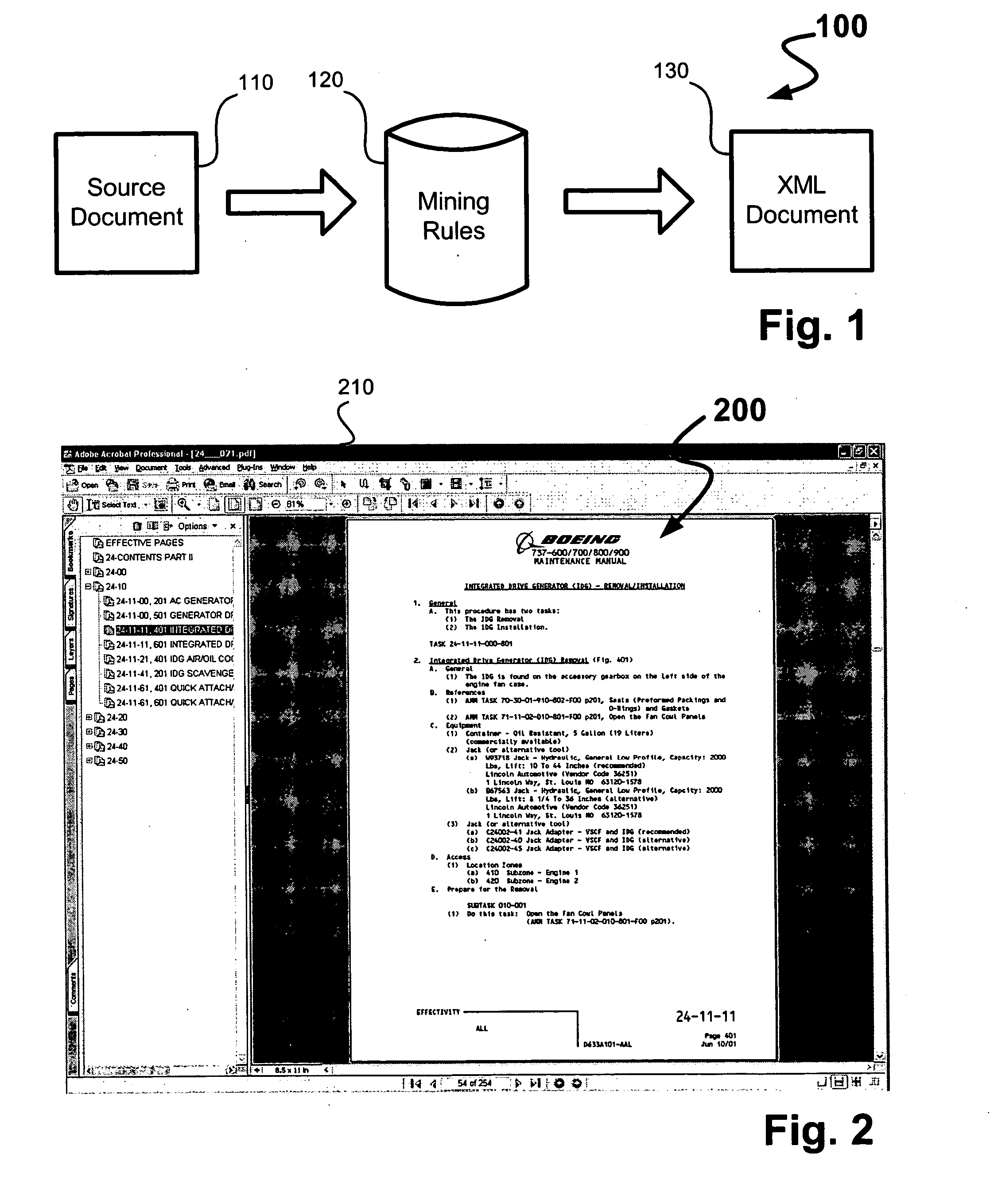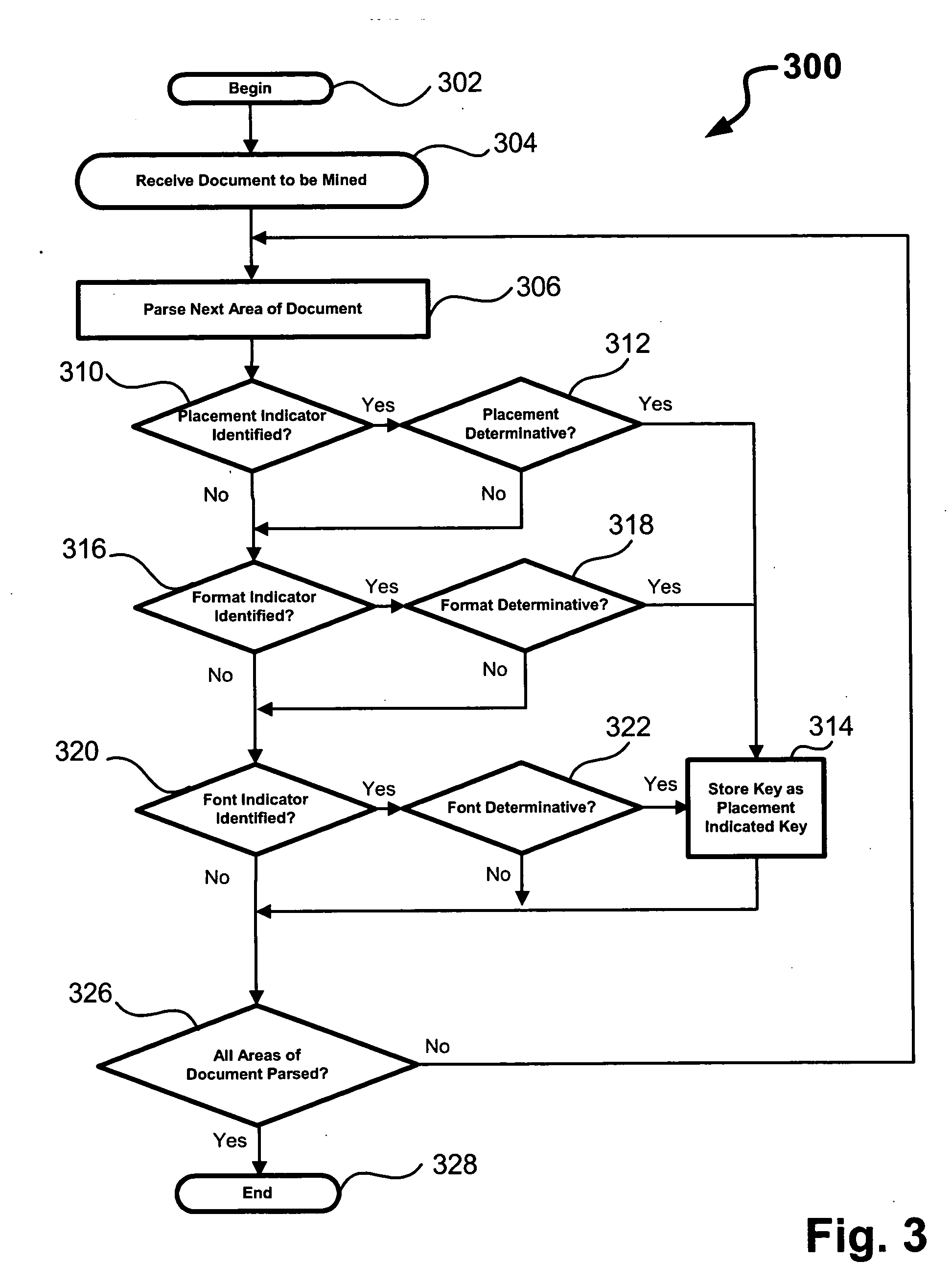Document information mining tool
a document information and mining tool technology, applied in the field of information extraction, can solve the problems of time-consuming use of tables and indices, difficult to access specific information, time-consuming to create, etc., to facilitate linking the keys, facilitate the creation of links, and facilitate the creation of references
- Summary
- Abstract
- Description
- Claims
- Application Information
AI Technical Summary
Benefits of technology
Problems solved by technology
Method used
Image
Examples
example 400 (fig.4)
[0034] Example 400 (FIG. 4) shows a key being extracted from a document segment 402. In particular, the key includes a section title, “INTEGRATED DRIVE GENERATOR (IDG)—REMOVAL / INSTALLATION.” The key is identified by rules 404 recognizing a combination of indicators using general, tribal, and / or other knowledge. In terms of placement, the potential key begins at a left side of a page and is a first line of a page body. In terms of font, the potential key is all UPPERCASE. The potential key is thus identified as a section title and identified as a key of interest. The key is extracted and stored in a structured format 406, in this case an XML document, where the key is designated as a title so that if can be located for navigation purposes.
example 500 (fig.5)
[0035] Example 500 (FIG. 5) shows a second key being extracted from a document segment 502. The key includes a task identifier, an expected and sought-after key in an AMM. The task identifier is determined in this case by format indicators. The task identifier includes a string of two digits, two digits, two digits, three digits, and three digits all separated by dashes. Accordingly, a rule 504 identifies this format as a task identifier, which is thus identified as a key. The key is extracted and stored in an XML document 506 where the key is designated as a task number so that it can be located for navigation purposes.
[0036] Example 600 (FIG. 6) shows a third key being extracted from a document segment 602. The key includes a chapter number (24-11-11), which may be another expected and sought-after key in an AMM. The chapter number is determined in this case by placement and format indicators. In the present example. the chapter number is always on a right side of a page, and is a...
example 700 (fig.7)
[0037] Example 700 (FIG. 7) shows a fourth key being extracted from a document segment 702. The key includes a particular substantive section that, in this case, is “Effectivity” that is used to designate the applicability of a selected portion of the AMM to a particular aircraft. The substantive section is determined in this case by placement and format indicators. In the present example, the substantive section of interest is always on a left side of a page (a placement indicator) and always follows the term “Effectivity.” As in the previous example, a rule 704 identifies the potential key as the substantive description “Effectivity” and identifies it as a key of interest. The key is extracted and stored in an XML document 706 where the key is designated as “Effectivity” so that it can be located for navigation purposes.
[0038]FIG. 8 shows an XML document 800 that collects the extracted keys. The XML document 800 shows a page number 802, a chapter number 804 subdivided into its con...
PUM
 Login to View More
Login to View More Abstract
Description
Claims
Application Information
 Login to View More
Login to View More - R&D
- Intellectual Property
- Life Sciences
- Materials
- Tech Scout
- Unparalleled Data Quality
- Higher Quality Content
- 60% Fewer Hallucinations
Browse by: Latest US Patents, China's latest patents, Technical Efficacy Thesaurus, Application Domain, Technology Topic, Popular Technical Reports.
© 2025 PatSnap. All rights reserved.Legal|Privacy policy|Modern Slavery Act Transparency Statement|Sitemap|About US| Contact US: help@patsnap.com



